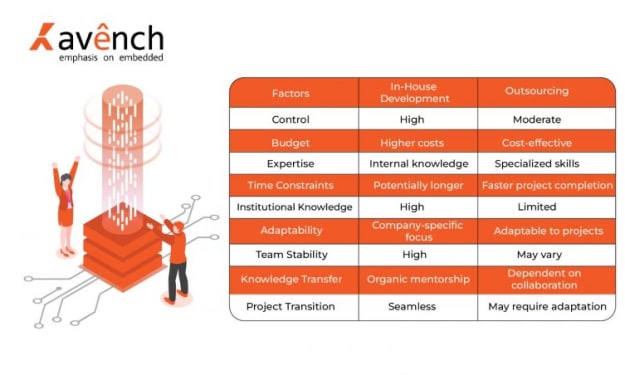EMBEDDED PRODUCT DEVELOPMENT LIFE CYCLE
Understanding this lifecycle is crucial for companies aiming to deliver cutting-edge solutions that meet market demands and exceed customer expectations.

Embedded Product Development Life Cycle: Ensuring Success in Advanced Systems
In today's rapidly evolving technological landscape, embedded systems play a pivotal role in powering a wide array of devices, from smart appliances to industrial machinery. The development of embedded products follows a structured lifecycle that ensures efficiency, reliability, and functionality. Understanding this lifecycle is crucial for companies aiming to deliver cutting-edge solutions that meet market demands and exceed customer expectations.
1. Definition and Planning
The journey of developing an embedded product begins with clearly defining its purpose and scope. This phase involves identifying the target market, understanding user requirements, and defining the technical specifications. Stakeholder collaboration is essential at this stage to align business goals with technical feasibility.
Key activities include:
Market Research: Identifying competitors, market trends, and customer needs.
Requirement Analysis: Gathering and documenting detailed functional and non-functional requirements.
Feasibility Study: Assessing technical, economic, and operational feasibility.
2. Design and Architecture
Once requirements are defined, the design and architecture phase commences. This stage lays the foundation for the entire product. Engineers and designers collaborate to create a robust architecture that meets performance, power consumption, and scalability goals.
Activities in this phase include:
System Design: Defining hardware and software components, interfaces, and interactions.
Prototyping: Building initial prototypes to validate design concepts and gather feedback.
Safety and Security Considerations: Incorporating measures to ensure product reliability and data protection.
3. Implementation and Integration
With the design finalized, developers proceed to implement the embedded system. This phase involves coding software, integrating hardware components, and conducting rigorous testing to detect and rectify defects early.
Key tasks include:
Software Development: Writing code, debugging, and optimizing performance.
Hardware Integration: Assembling components and ensuring compatibility.
Testing and Validation: Conducting unit tests, integration tests, and system tests to ensure functionality and reliability.
4. Testing and Verification
Testing is a critical phase to validate that the embedded product meets specified requirements and performs reliably under different conditions. This includes functional testing, performance testing, usability testing, and compliance testing to ensure adherence to industry standards and regulations.
Activities include:
Test Planning: Developing a comprehensive test plan covering all aspects of the product.
Test Execution: Running tests, analyzing results, and fixing issues identified.
Verification and Validation: Confirming that the product meets design specifications and user expectations.
5. Deployment and Maintenance
Once the product passes rigorous testing and quality assurance checks, it is ready for deployment. Deployment involves preparing for production, installation, and user training. Post-deployment, ongoing maintenance and support ensure that the product continues to operate effectively and efficiently throughout its lifecycle.
Activities include:
Deployment Planning: Coordinating rollout schedules and logistics.
User Training: Providing training materials and sessions for end-users.
Maintenance and Updates: Monitoring performance, addressing issues, and releasing updates as needed.
Conclusion
The embedded product development lifecycle is a structured approach that ensures systematic planning, design, implementation, testing, deployment, and maintenance of advanced systems. Each phase is interconnected, with activities and deliverables building upon the previous stage to achieve overall project success.
By adhering to this lifecycle, companies can mitigate risks, control costs, and deliver high-quality embedded products that meet the evolving demands of the market. Moreover, it fosters innovation by allowing teams to iterate on designs, incorporate feedback, and leverage emerging technologies effectively.
In conclusion, mastering the embedded product development lifecycle is essential for companies aiming to create competitive advantages through technological innovation. It is not merely a process but a strategic framework that enables organizations to navigate complexities, deliver value to customers, and drive growth in today's dynamic and competitive marketplace.
About the Creator
Enjoyed the story? Support the Creator.
Subscribe for free to receive all their stories in your feed. You could also pledge your support or give them a one-off tip, letting them know you appreciate their work.





Comments
There are no comments for this story
Be the first to respond and start the conversation.